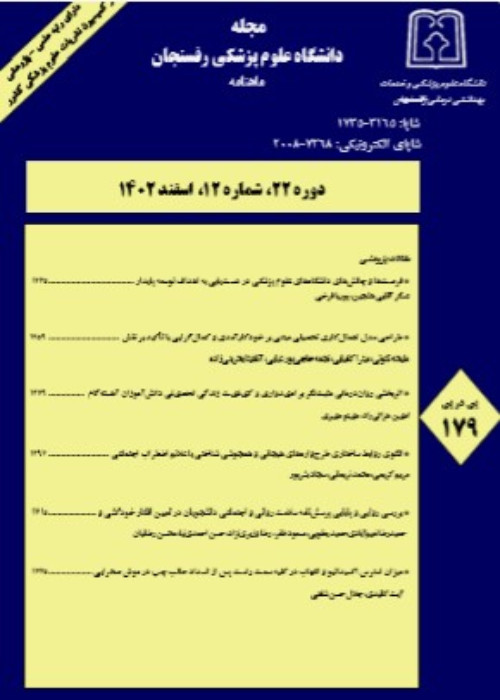Rational Usage of Drug Indices in the Prescriptions of Kerman Medical Practitioners in 2008
Improving the drug usage pattern and moving through a community with appropriate، safe، with doses that meet individual requirements and for an adequate period of time is pivotal and recommended by World Health Organization. In this study، we investigate the drug prescription patterns in the Kerman province in Iran.
Prescription indices in Kerman prescription database of Food and Drug deputy in 2008، which includes prescription of 245 general practitioners and 455 physicians، were extracted. Selected WHO drug use indicators including number of prescribed medicines and their cost، maximum number of prescribed medicine، number of prescribed antibiotics، injection and corticosteroids were investigated in this cross-sectional study design.
Average number of medicines prescribed per patient was 3. 15±0. 49 and 2. 85±0. 61 for general practitioners and physicians، respectively (p=0. 001). Mean for maximum number of prescribed medicines were 6. 67±1. 20 and 6. 57±1. 67 for general practitioners and physicians، respectively. For general practitioners، 16. 8% of prescriptions encountered with an injection، 17. 7% encountered with a corticosteroid prescription and 51. 9% encountered with an antibiotic. For physicians، 12. 8% of prescriptions encountered with an injection، 15. 4% with a corticosteroid prescription and 39. 0% encountered with an antibiotic. The difference in prescribing these categories was significant between practitioners and physicians (p=0. 001، p=0. 001 and p=0. 016، respectively). Experienced practitioners were more cautious in the number of prescribed medicines (p=0. 001)، however، the price of their prescriptions were higher than the young practitioners (p=0. 001).
Despite the educational programs for the rational use of drugs، prescribing indicators are far from international recommended criteria. Hence، it is necessary to promote prescribing practices through establishing more comprehensive training courses related to the rational use of medicines. Besides، exerting surveillance systems is a useful way to monitor and control drug usage in the community.
- حق عضویت دریافتی صرف حمایت از نشریات عضو و نگهداری، تکمیل و توسعه مگیران میشود.
- پرداخت حق اشتراک و دانلود مقالات اجازه بازنشر آن در سایر رسانههای چاپی و دیجیتال را به کاربر نمیدهد.


